Compared to some of your other marketing activities, customer reference marketing can involve a lot of people. You need buy-in from participating customers, your sales reps, legal and regulatory for the necessary reviews and approval, plus you’ll be working with photographers, camera experts, copywriters for the interviews in local languages and more.
That’s why a good process is so important when it comes to customer reference marketing programs. Since the ROI on customer reference marketing can be considerable, it’s more than worth it to develop a strong framework so you can efficiently and easily produce as many reference cases as your goals –and budget – allow.
Here are some key steps and checkpoints to keep in mind as you develop your customer reference marketing program:
Put the possibility of a customer reference case right in the sales contract. Instead of approaching key clients about a customer profile after a contract has been signed, get sales to include the option in the sales contract. Sales can promote it as a valuable publicity add-on, and then the door is already open when you approach the customer to get started on a case.
Get written approval from the customer before starting. Treat the development of a reference case as an official, formal process, and your customers will treat it that way too. The weight of a formal authorization from the customer side will help you persuade people at the customer location to participate in interviews, photography sessions, videos, etc.
Add video and photography to your most important cases. If you’re profiling a high-value customer, consider making videos of your interviews and activity at the customer location, or arrange for professional photos of the location and participants. For smaller cases, you might get by with a phone interview and sending in a local photographer, or even photos taken by the participants themselves. It all depends on the “look and feel” you want for your program, and how consistent you want your cases to be.
Make the interview day easy and enjoyable for your customer. If you visit the customer in person, make sure to prepare thoroughly, and make it an enjoyable day for everyone involved. Make a detailed schedule, with fixed time slots for all interviews and video filming. Be sure all participants are fully informed, and have received the interview questions at least 10 days beforehand. Another bonus: by being onsite yourself you can do some informal focus-group type research to gain an inside perspective on the customer’s likes/dislikes and motivations.
Be sensitive about language. Make sure you talk the language of your customer. Conduct the interview in their preferred language, and don’t force them into using English – especially in front of a camera. While your interview subject might believe they can handle the interview in a different language, you don’t want them to be disappointed if they sound awkward in the final video. You can translate and subtitle so that your end product is available in all the languages you need.
Get the customer to approve everything related to the case. Write, edit, select the right images, include captions, titles, subtitles … and send it all together for final review and approval by your customer. Don’t send it to them in bits and pieces, and don’t change anything after you receive their sign-off. They will appreciate your professionalism, and you’ll have a smoother approval process.
Translate and share regionally and internationally. People love to read about the experiences of others, even those in different countries or regions. Translate your cases into whatever languages will allow you to get the most mileage from each case.
What if you can’t quote(?) the customer by name? Sometimes, customers don’t want to be profiled, or for strategic reasons you can’t promote the partnership. In that case, there’s still the opportunity to write a generic case that outlines the situation and industry. Or if it’s too early in the relationship to work on a case, you can at a minimum create an internal win story to share experience and knowledge across your sales teams, so everybody can learn from wins in other countries or regions.
Create clear marketing guidelines for everyone to follow. Create writing guidelines, photography guidelines and video guidelines to ensure consistency in all the materials you create locally and worldwide.
Promote your completed cases widely, along with your customer. Work with the customer on a plan to promote the case as widely as possible. They can use it internally in their organization to highlight the project, for visibility to execs, their team, etc. Provide your sales with all the material they need to incorporate the cases into their presentations; it’s very powerful to kick off a sales presentation with a quote from a customer reference case or an opening video.
Analyze your results. Measure the success of your cases so you can show the value to all the stakeholders involved. Use your marketing automation and sales enablement platforms (such as HubSpot, Showpad, Veeva) to keep track of where and how the cases are used, and how they help sales to find new leads and new customers. You can also use these analytics to highlight the benefits to the customers you want to profile.
When it comes to customer reference marketing, there can be a lot of moving parts to keep track of. At Living Stone, we’ve been successfully managing reference programs for our customers for more than 25 years.
Would you like to set up a free 30 minute web meeting, to talk about how customer reference marketing could help support your marketing goals? Call me at +32 55 591 007, or email at anne-mie.vansteelant@livingstone.eu, to set up a call.
Forgot about the white paper ? 
Reference marketing is used in many industries, read how it works in healthcare:
Read how it works in ICT:





